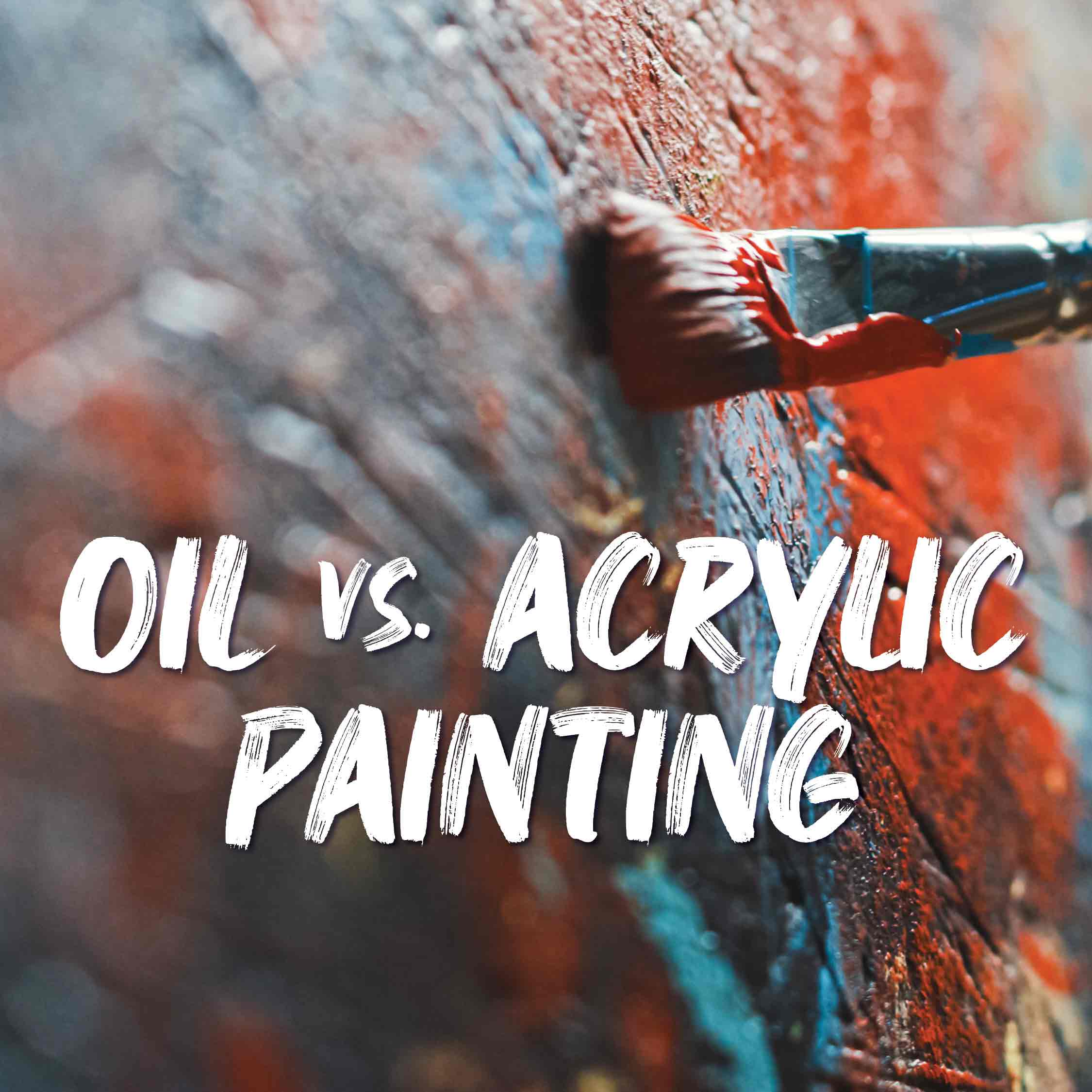Oil vs. Acrylic Painting
Choosing the Right Medium for Your Artistic Journey
When it comes to painting, choosing the right medium is an important decision for any artist! Two prominent paint mediums, oils and acrylics, have long captivated artists. Each type of paint offers its own unique set of characteristics, lending itself to different styles, techniques, and creative possibilities.
Let’s delve into the characteristics and nuances of oil and acrylic painting, exploring the strengths and considerations of both mediums. So whether you’re a beginning painter, aspiring artist, or art enthusiast, you can make an informed choice that aligns with your artistic vision.
Oil Painting: Textured and Brilliant
Often hailed as the classic medium, oil painting is revered for its luminosity, depth, and versatility. Oil paints have a rich history, from the Renaissance masters to the Impressionists and beyond. Some key features and benefits of oil painting are:
1. Slow Drying Time: One of the distinctive qualities of oil paint is its slow drying time. This allows artists to work with their colors for an extended period, blending colors seamlessly and achieving smooth transitions. Oil paint offers the freedom to manipulate the paint and make changes long after initial application.
2. Vibrant Colors and Subtle Blending: Oil paint’s richness and depth of color is unmatched. Color pigments are suspended in linseed or other oils in a concentration much higher than acrylics, making for more effortlessly vibrant and luminous paintings.
3. Impasto Effects: Oil paint’s thick consistency lends itself well to impasto techniques, where the brushstrokes are left visible on the canvas. With oils, texture and dimension are easily added to the artwork, enhancing its visual impact.
4. Longevity: Once fully dried, oil paintings are highly durable and stand the test of time, with many renowned works retaining their brilliance for centuries. Paintings done with oil can maintain their original quality and integrity for generations, making it a preferred choice for collectors.
Before deciding oil paints are right for you, keep these two considerations in mind:
- Drying Time: The slow drying process of oil paints is a drawback for artists who prefer a quicker workflow or need to complete their artwork within a limited timeframe.
- Odor and Ventilation: Oil paints typically contain solvents, which can emit strong odors and congest an indoor studio space. Adequate precautions must be taken to ensure a safe working environment with proper ventilation.
Acrylic Painting: Versatile and Fast
Emerging in the mid-20th century as a revolutionary medium that offered artists new possibilities and artistic freedom, acrylics have gained immense popularity for their versatility and fast-drying nature. Acrylic paints offer many perks:
1. Quick Drying: One of the most significant advantages of acrylic paints is their rapid drying time. Unlike oils, acrylics dry quickly, allowing artists to work efficiently and layer colors without long waiting periods.
2. Versatility: Acrylics are shape-shifters. With a little know-how, they can mimic the properties of other mediums such as watercolors and oils. They can be applied thinly for translucent washes or layered thickly for impasto effects. Acrylics also work well with a wide range of additives and mediums, allowing for unlimited experimentation with different textures and finishes.
3. Easy Cleanup: Unlike oil paints, acrylics can be cleaned up with water, eliminating the need for solvents. This feature makes acrylic painting more convenient and environmentally friendly.
4. Flexibility: Acrylic paints can be used almost anywhere! On a variety of surfaces, including canvas, paper, wood, and even glass. They adhere well to a multitude of materials, making them ideal for mixed media artworks.
While the appeal of acrylic paints is strong, consider these characteristics when working with acrylics:
- Color Shift: Acrylic paints tend to darken slightly as they dry, which may affect color matching and consistency. Artists should plan for this shift when working on color-sensitive compositions.
- Blending and Wet-on-Wet Techniques: Acrylics dry quickly, making blending and wet-on-wet techniques more challenging than with oil paints. Artists may need to work swiftly or use additives to extend acrylic paint’s drying time.
Choosing the Right Medium for Your Creativity
In the world of painting, both oils and acrylics are remarkable mediums, each with its own set of nuances and advantages. Oil painting provides richness, blending capabilities, and extended workability, while acrylic painting offers versatility, fast drying time, and easy cleanup.
Ultimately, the choice between oil and acrylic painting is a deeply personal one, depending on your artistic preferences, working style, and desired effects. Many artists even use both mediums at various times, taking advantage of each medium’s unique qualities.
Experimentation with both paint mediums to find what resonates with you as an artist is key. By exploring the properties of oil and acrylic paints, you’ll discover your own unique preferences and develop a personal artistic style. So grab your brushes and don’t wait to begin your bold, colorful, creative journey—whether with oil or acrylic, the magic of painting is there for you to discover!

Want TO EXPLORE ACRYLIC PAINTING LIVE?
Learn Golden Acrylics A to Z with Golden Working Artist and Mastrius Mentor Samantha Williams-Chapelsky!
Learn the tips and techniques of acrylic paint and have all your questions answered by a Master Artist!
The Master Artists have a lot to say about oil vs. acrylic paint.
Watch the recording of a February 2023 Mastrius Event: Oils vs. Acrylic Paints with Mastrius Mentors David Langevin, Christina Ramos & Manon Sander—PLUS 80+ past event recordings!—in the Mastrius Events Recording Library!
Be mentored in acrylic paints by a Master Artist!
Aspiring, Emerging, and Accomplished artists alike—take your acrylic painting to the next level with an art mentor of your choosing!
